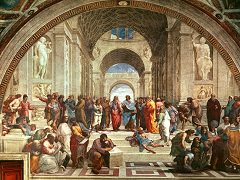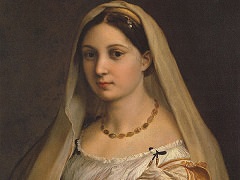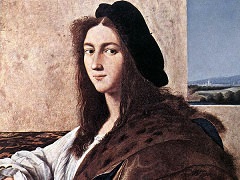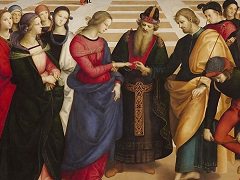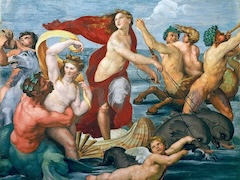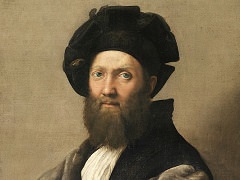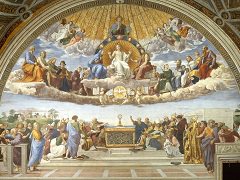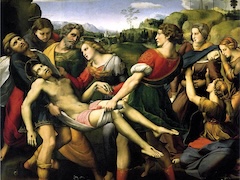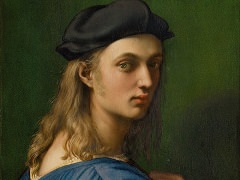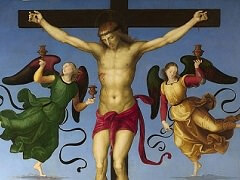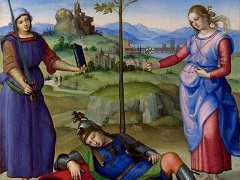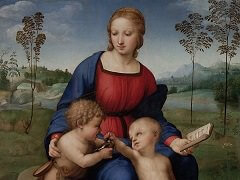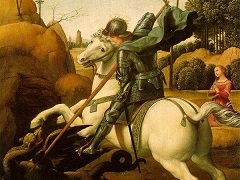Sistine Madonna - by Raphael
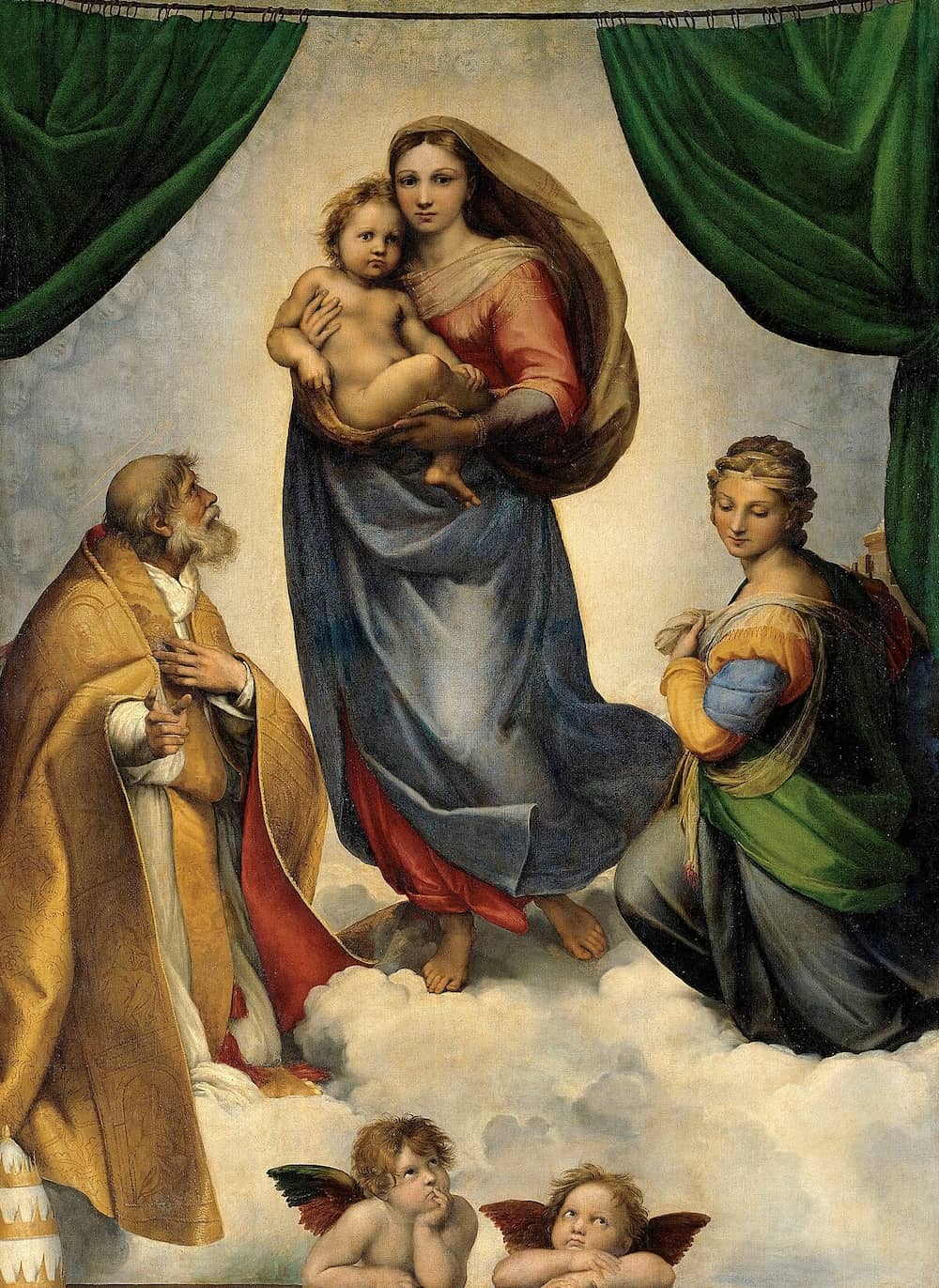
The Sistine Madonna is perhaps the most thoroughly discussed and analyzed of all Raphael's paintings - more than one lengthy monograph has been devoted to it - yet questions of interpretation remain unanswered. The open curtains, a trompe l'oeil device of great ingenuity, function to reveal this vision of the holy personages as if they constituted some sort of sacred relic that is exposed only temporarily. The use of drawn-back curtains had a long tradition in medieval and Renaissance tombs, in both three-dimensional and bas-relief sculpture, and these monuments may have provided Raphael with the original idea. The vision is set before a wooden parapet, upon which rests not only the papal tiara with the acorns of the Rovere impresa but delightful, seemingly bored, winged putti, who serve as a suitable counterpoint to the sacred figures above.
There is quite a back-story regarding the model. She is assumed to be Margherita Luti, the daughter of a Roman baker named Francesco. Many art critics believe that Margherita was Raphael's mistress for the last twelve years of his life, from some point in 1508 until his death in 1520.
Raphael's use of the curtain in this picture invoked a device that had been employed by a number of the Old Masters as a trompe-l'oeil way of drawing the viewer into the composition, pointing to the artifice of the scene, and also showcasing their own ability to paint something as lifelike as the drapery hanging in front of a picture; this was the case, for example, in The Art of Painting and The Girl with a Pearl Earring by Johannes Vermeer.
Relocated to Dresden from 1754, the well-known painting was particularly influential in Germany. After World War II, it was relocated to Moscow for a decade before returned to Germany. It is now a master piece of the Gemaldegalerie Alte Meister.

